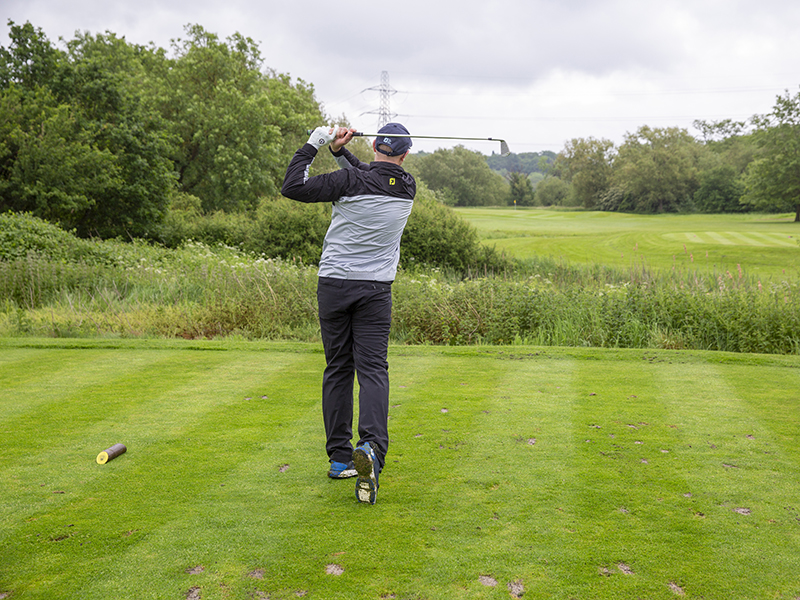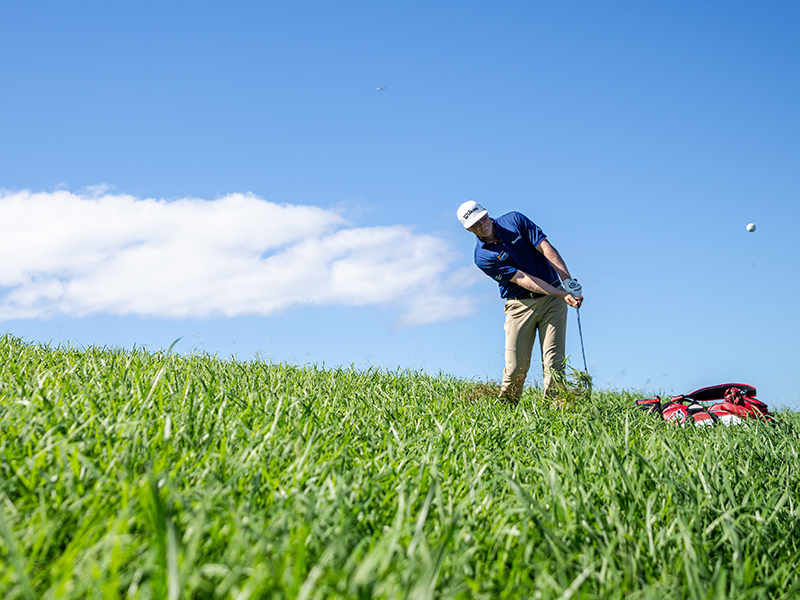Golf Clubs Must Do More To Prevent Avoidable Slow Play... And Stop Blaming Golfers!
It's easy to point the finger at golfers when things slow down on the course, but golf clubs should be doing more to prevent avoidable slow play...


Slow play is a one of the biggest and most talked about issues in golf, with the finger of blame often pointed at specific groups of players. For many amateurs, it's their number one pet peeve, but I am fed up with pace of play being used as a stick to beat less competent golfers.
I am fortunate enough to be able to play quite a bit of golf, at lots of different courses, and I often spend days looking forward to it in the lead up to my tee time. Frustratingly, however, my enthusiasm can dissipate quickly when slow play plagues the round.
Spending what feels like an eternity waiting between each shot, and eventually succumbing to a stiff, tense swing when the green light eventually appears is one way to escalate my level of exasperation, and a lot of the time it isn't the fault of other golfers.
Much of the round's pace is dictated by aspects set well before a ball is even hit, so perhaps we should be looking more closely at what golf clubs can do to limit avoidable slow play – and I've got three simple suggestions...
1. Tee Time Slots
In my experience, there appears to be a rise in the number of golf clubs adopting a seven or eight minute gap between tee time slots. In the case of pay-to-play courses, I can only assume this is out of pure greed - trying to maximise revenue at the detriment of the on-course experience.
This is a decision I cannot get behind, as it leads to a misguided narrative spurted by so many who jump to blame the players for a slow and arduous experience on the golf course.
At a members' club, especially during competition rounds, I cannot fathom why this policy would be adopted. One argument is that reducing the intervals between slots leads to an increased opportunity for more golfers to get out on the course, but that trade-off then comes in the form of slower rounds and increased tension among members.
Subscribe to the Golf Monthly newsletter to stay up to date with all the latest tour news, equipment news, reviews, head-to-heads and buyer’s guides from our team of experienced experts.
The problem is amplified further when the group behind you plays very fast, as though they are trying to break the world record for the fastest round of golf in history, in which case seven or eight minutes is not enough time to create a suitable buffer.

Getting the right spacing for tee time intervals can have a huge impact on the pace of play
A study by Cornell University, looking into golf course revenue management and the impact of tee time intervals, suggests that the introduction of 8-minute slots "may cause an increase in course congestion at bottleneck holes due to variations in the pace of play".
While the study also stated the potential financial upside for courses where customers are paying for tee times, and those intervals are reduced, It explained that "the maximum revenue constrained by customer satisfaction probably occurs around an 11-minute tee time interval."
This further clarifies that allowing slow play to eek into the game can be a strategic choice to increase revenue, and is therefore not always the fault of the golfer on the ground.
2. Course Conditions
In my opinion, If clubs wish to adopt a policy of tighter intervals between tee times, one way they could offset some of the impact on the pace of play is through the course conditions.
Clearly, if you are playing one of the many flagship courses around the world, you sort of have to be prepared to face tough conditions and there is a level of responsibility on the player to be ready for that.
I don't believe that necessarily should be the case at your average members' club, however. Setting the course up to play tough is perfectly fine, but doing so in partnership with increased footfall on the course is a recipe for disaster. It's important to remember that golfers of all different abilities will be playing their rounds at the same time, and in order to grow the game that is something that should be encouraged.
Creating a scenario where one or two members of the group are searching for a lost ball on every other hole is not going to help with the pace of play, and while it's important that there are consequences for an errant shot, I am not sure some courses have the balance quite right.

You might expect to see these types of conditions on a top tour event, but they can sap the speed out of amateur golf
Some of the best courses I have played have penal rough, strategically placed bunkers, water hazards and plenty of trees, but ultimately you can usually find your ball (unless it's underwater - obviously) even if it takes you a couple of shots to recover.
At the amateur golf level, I am unsure that the shin-high tangled nests of doom or forced carries over a sea of perilous cabbage are necessary, especially when those features exist on holes with blind tee or approach shots.
If clubs are keen to get more golfers onto the course, either to make more money or simply increase participation, perhaps setting up a track that encourages a faster-pace would be a sensible move in the right direction.
We aren't playing the US Open here, and there are plenty of other ways to make golf hard while keeping the course playable for all ability levels.
3. Strategic Planning
Plenty of courses across the world struggle with the impact of bottlenecks on the flow of players navigating the course. Whether through an error in design or advancements changing the way we play the game, it can be really frustrating to arrive to an area of the course and see three groups waiting to tee off in front of you.
Logistically, changing the design of the course isn't easy, and can take lots of time and money to achieve, but there are proactive ways to tackle this problem.
Introducing strict guidelines on highlighted bottleneck areas is a potential solution. For example, when a group has finished playing their tee shot and started walking towards the fairway or green, having a designated marked point where you call up the next group to play their tee shots would immediately speed up play.
Once they have done this, your group can carry on playing the hole as normal and the process can be repeated. Where there is a bottleneck around the good ol' halfway house, ordering in advance by a quick message or call and collecting in a 'grab and go' style could also help to speed up proceedings.

Even at the very highest level, waiting on the tee can be frustrating...
I think it's important to note that I am not wholly shifting the blame for slow play away from golfers, as unfortunately there are plenty of issues still to address with players' knowledge and application of golf's etiquette and rules.
What I am saying is that perhaps the criticism should be more evenly shared between all parties, and the role of those making the decisions should be acknowledged. In order to avoid the soul-crushing tedium of a five-hour round of golf, joint and co-operative action is required - and we need to stop naively condemning the average golfer.

Baz joined Golf Monthly in January 2024, and now leads the instruction section across all platforms - including print and digital. Working closely with Golf Monthly's Top 50 Coaches, he aims to curate and share useful tips on every aspect of the game - helping amateurs of all abilities to play better golf. Baz also contributes weekly to the features section, sharing his thoughts on the game we love and the topics that matter most. A member at Sand Moor Golf Club in Leeds, he looks forward to getting out on the course at least once a week in the pursuit of a respectable handicap.
Baz is currently playing:
Driver: Benross Delta XT
3-Wood: Benross Delta XT
Hybrid: TaylorMade Stealth 4 Hybrid
Irons: Benross Delta XT 5-PW
Wedges: TaylorMade RAC 60, Callaway Jaws MD5 54
Putter: TaylorMade Spider Tour